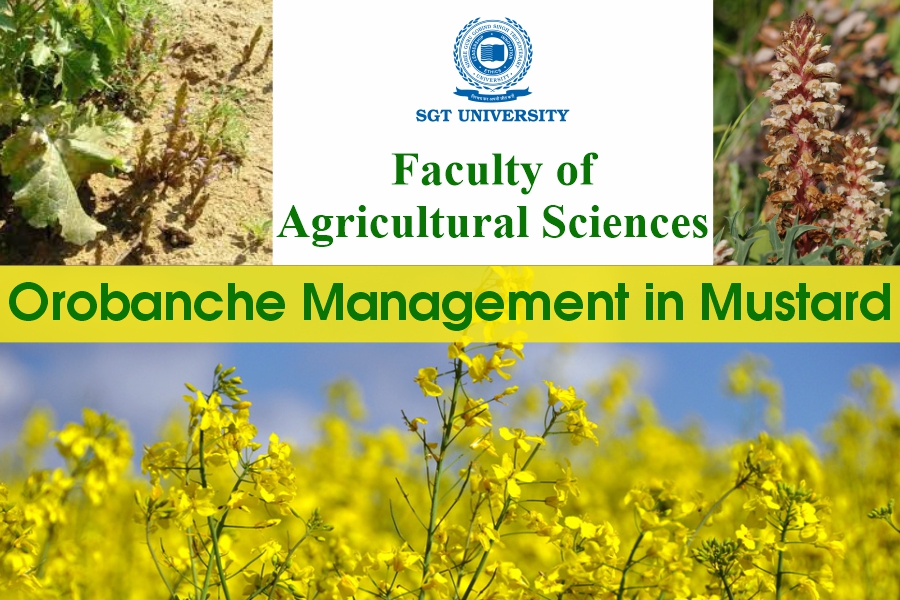Mustard (Brassica juncea) is an oilseed crop being the world’s third most important crop after soybean and palm contributing 28.6% in the total production of oilseeds with 36.6 m ha area, 72.4 mt production with 1980 kg/ha productivity.
In India, oilseed accounts for 27.04 mha of cultivated area and production of 33.42 mt with the productivity of 1236 kg/ha. In oilseed crops, mustard is the second most important edible oilseed after groundnut, sharing 27% of India’s oilseed economy with 6.8 m ha area, 10.1 mt production and 1499 kg/ha productivity.
Haryana contributes 12.6 % (1.14 mt ) of total mustard production. Weeds are an important constraint in a good harvest of the crop. Simultaneous emergence and rapid growth of weeds lead to severe crop-weed competition for moisture, nutrients, light and space and lead to a 20-25% reduction in the yield.
Also Read: Integrated Management of Major Diseases of Rapeseed & Mustard
Of the several weed species infested, broomrape (Orobanche spp. is a dominant weed of this crop. It is an annual root hollo parasite herb propagated by seeds. Orobanche or broomrape (Orobanche spp.), locally known as margoja, rukhri, is a complete parasite that lacks chlorophyll and obtains carbon, nutrients, and water through haustoria connect the parasite with the host vascular system and therefore strongly competing with the host plant for water, mineral nutrition.
The parasite seedling then infects nearby host roots forming haustoria on them. Soon after that, the broomrape emerges through the soil as pale shoots devoid of chlorophyll. Each plant produces more than a million seeds in a short period of about eight weeks.
Also Read: PGPR: Key Players in Plant Stress Mitigation
In Haryana, mustard is mainly grown in the sandy track of the southwest part with low rainfall and somewhat comparatively higher temperature during mid-January – February in the winter season, which stimulate its germination. The infested crop shows wilting symptoms and poor growth, resulting in poor yield.
The main reason for the heavy infestation of farmers’ fields is mono-cropping on conserved moisture because of the lack of availability of alternate crops. Secondly, broomrape is not controlled by recommended herbicides like pendimethalin.
Management of Orobanche
Regarding management, many techniques are tried, such as using edible and non-edible oils of groundnut, caster and coconut by using 1 to 2 drops on the weed canopy before flowering.
Still, this method could not be popular among the farmers as it is too tedious and labour intensive. Application of glyphosate at 25 g/ha at 25 DAS and 50 g/ha at 55 days after sowing controlled broomrape effectively.
The Faculty of Agricultural Sciences (FCAS) at SGT University, established in 2016-17, is equipped to face various challenges in the agriculture sector. The faculty has enhanced essential learning, critical thinking, and discussion-based & analysis-based learning.
The syllabus recommended by the Indian Council of Agricultural Research (ICAR) for UG and PG courses is followed, and it is being aligned with National Education Policy-2020 as per ICAR guidelines.




